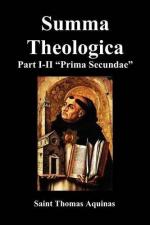As to those matters that regarded the spiritual worship of God, consisting in the teaching of the Law and the Prophets, there were, even under the Old Law, various places, called synagogues, appointed for the people to gather together for the praise of God; just as now there are places called churches in which the Christian people gather together for the divine worship. Thus our church takes the place of both temple and synagogue: since the very sacrifice of the Church is spiritual; wherefore with us the place of sacrifice is not distinct from the place of teaching. The figurative reason may be that hereby is signified the unity of the Church, whether militant or triumphant.
Reply Obj. 4: Just as the unity of the temple or tabernacle betokened the unity of God, or the unity of the Church, so also the division of the tabernacle or temple signified the distinction of those things that are subject to God, and from which we arise to the worship of God. Now the tabernacle was divided into two parts: one was called the “Holy of Holies,” and was placed to the west; the other was called the “Holy Place” [Or ‘Sanctuary’. The Douay version uses both expressions], which was situated to the east. Moreover there was a court facing the tabernacle. Accordingly there are two reasons for this distinction. One is in respect of the tabernacle being ordained to the worship of God. Because the different parts of the world are thus betokened by the division of the tabernacle. For that part which was called the Holy of Holies signified the higher world, which is that of spiritual substances: while that part which is called the Holy Place signified the corporeal world. Hence the Holy Place was separated from the Holy of Holies by a veil, which was of four different colors (denoting the four elements), viz. of linen, signifying earth, because linen, i.e. flax, grows out of the earth; purple, signifying water, because the purple tint was made from certain shells found in the sea; violet, signifying air, because it has the color of the air; and scarlet twice dyed, signifying fire: and this because matter composed of the four elements is a veil between us and incorporeal substances. Hence the high-priest alone, and that once a year, entered into the inner tabernacle, i.e. the Holy of Holies: whereby we are taught that man’s final perfection consists in his entering into that (higher) world: whereas into the outward tabernacle, i.e. the Holy Place, the priests entered every day: whereas the people were only admitted to the court; because the people were able to perceived material things, the inner nature of which only wise men by dint of study are able to discover.




